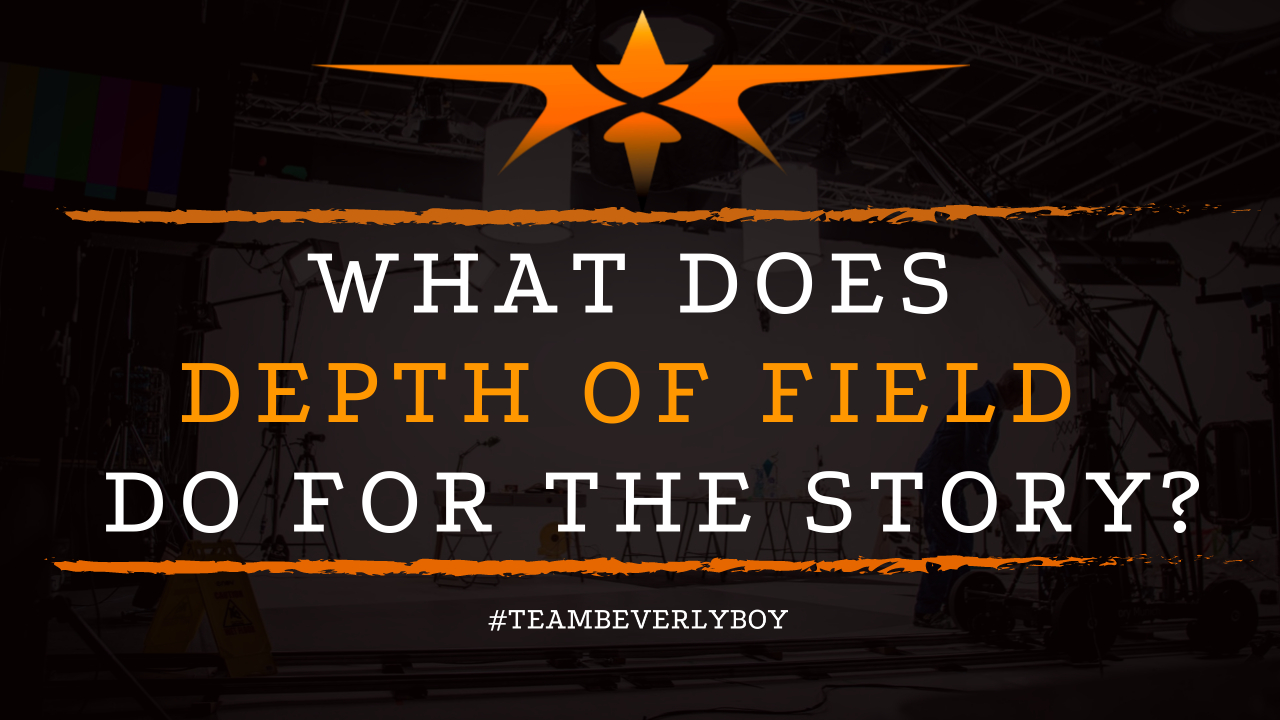
What Does Depth of Field Do for the Story?
The depth of field is an important element of shot composition. That filmmakers recognize has the power to drive intimacy and emotions between characters and the audience when composing a story. Most avid filmmakers recognize the impact that depth of field can have on a shot’s composition. But what does depth of field do for the story itself? And the emotional impact it has on the viewer? How can filmmakers achieve deeper connections with their audience, through actively engaging the use of DOF to their storytelling advantage?

What is Depth of Field?
We’ve got entire posts that discuss depth of field, how it works, and what it is–check those out for detailed information on Depth of Field (DOF).
As a reminder, depth of field represents the distance between the nearest and farthest objects in a scene. That appear at acceptable sharpness within the image.
So, think of your scene in terms of layers from front to back. The first object that appears sharp begins your “field” and the last object that appears sharp ends your “field.” The distance between those two is the “depth” of the field.
What Does Depth of Field Do?
The depth of field can actually influence your audience’s expectation for the scene. But how?
We probably see the most emotional impact and storytelling power when shallow depth of field is used. Primarily because using this depth of field the filmmaker can direct the audience’s eyes to a particular element within the scene.
Using rack focus, the filmmaker can shift the audience’s attention to another area. And another as the story unfolds. Of course, deep depth of field can also have profound storytelling power. As it allows the audience a glimpse into the entire frame.
This is sometimes useful for helping the audience to see the grand scheme of things. The grandiose nature of the current setting, or for showcasing a group. Without placing emphasis or special attention on any one subject within the group thus creating a sense of equality.
Audience Expectations
Thus, as we dive deeper into how depth of field can influence the audience’s expectations of the scene and what happens next in the story, take for example how the audience will react if you were to use one depth of field over another when telling your story visually.
For example, consider a scene where a family of 5 sites around a dinner table together. Now think about changes in your depth of field and how they can impact your audience’s expectations of the scene:
If you use a deep depth of field to show the entire scene, all family members equally within the focus area of the shot, giving no specific focus to any one individual – your audience might expect very little from this scene as they’ve not been provided a whole lot of information, right?
Shallow Depth of Field
But what if you were to use a shallow depth of field, such that just the mother and father are visibly in focus at the busy dinner table and the rest of the children were more or less blurred?
The audience might expect that the parents are typical, chatting about their day, and maybe even trying to block the kids out, just like in everyday life.
However, if you were to use shallow depth of field, and you were to focus in on one particular person at the table, really focusing in on this individual, the audience might expect that the purpose is to go into depth of character.
That way, they can connect with this particular character and sense what he or she might be thinking and they probably won’t even consider the other people at the table.
The Influence
When you think about truly understanding the answer to your question, “What does depth of field do for the story?” it’s important to carefully consider all the different ways that your depth of field can influence the audience’s thoughts about your scene, your characters, and their emotions.
Depth of field can do a lot for your story, acting largely as a guide that helps your audience to navigate through the visual narrative of your film, making assumptions or developing specific expectations for the scene based on what you choose to show (or not to show) at a given time.


